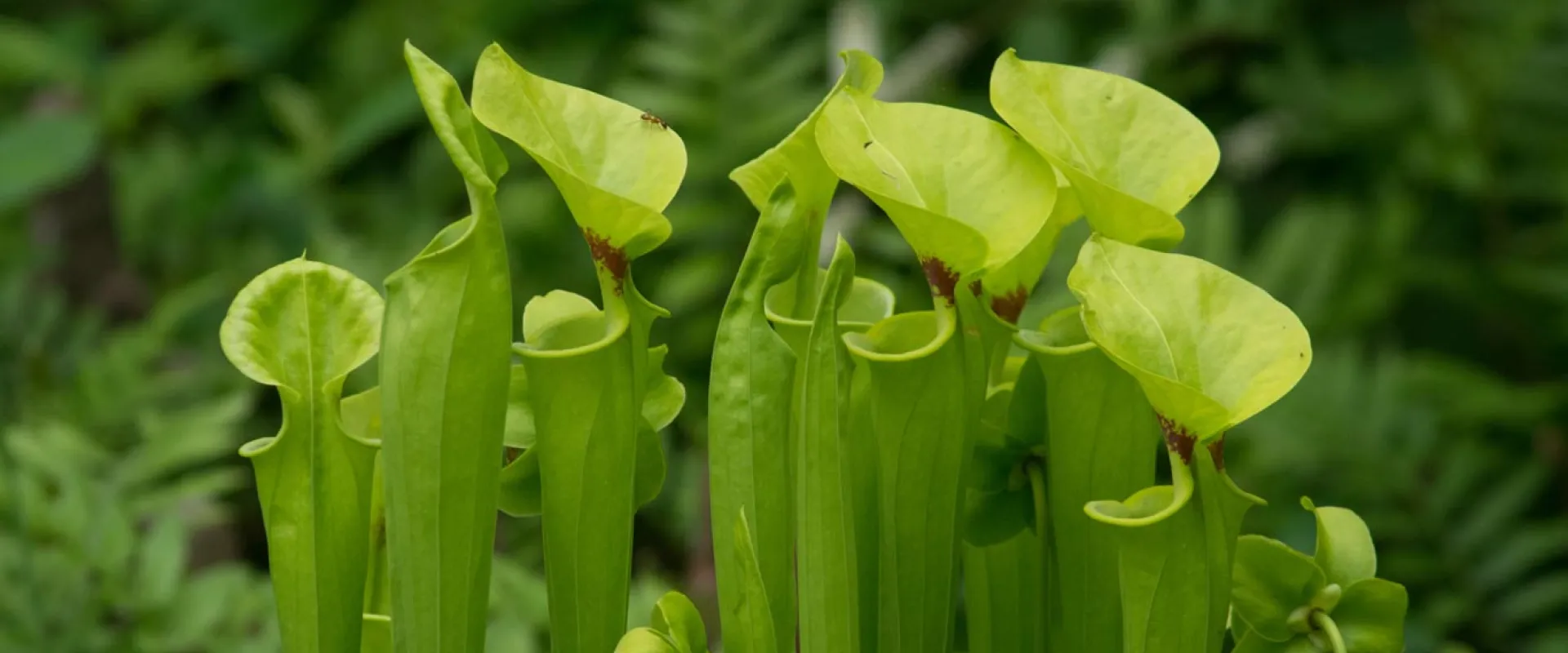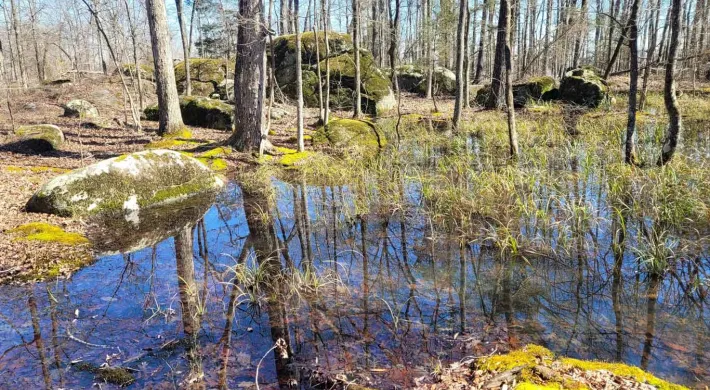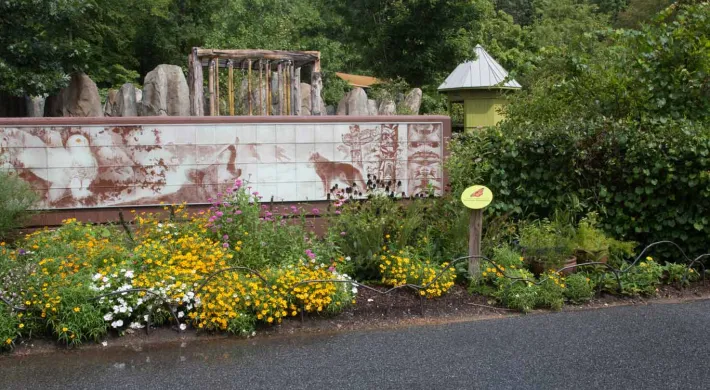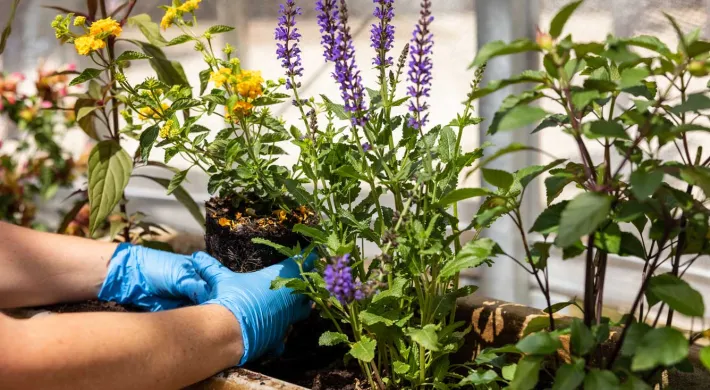The North Carolina Zoo houses several rare native plants, which are grown at the Zoo for educational purposes. One such species is the Federally Endangered Michaux’s sumac, of which only about 50 populations remain. The Zoo’s Michaux’s sumac collection is derived from two sources. One group is a mix of male and female plants that grew from seed in a Duke University propagation experiment, while the other all-female group originated from plants rescued from Georgia ahead of a construction project. Some of these plants can be viewed in the Piedmont Garden outside the Streamside Habitat, on the hillside next to the old tram stop outside Desert, in a bed to the left of the entrance to Africa parking lot, and on a hillside a bit further down the Africa parking lot loop road.
Other rare plants that can be seen on the Zoo grounds include the Federally Endangered Schweinitz’s sunflower and smooth coneflower, and small populations of sweet pitcher plant, green pitcher plant, and Oconee bells, the latter famous for bewitching one of America’s most famous botanists, Asa Gray.
Pitcherplant rescue
In addition to maintaining rare plant populations on the Zoo grounds, the Zoo is also actively involved in saving rare plant populations in the wild. For example, in July 2017, in partnership with staff and volunteers from the Uwharrie National Forest, NC Forest Service, LandTrust for Central North Carolina, and Zoo staff rescued a hundred or so yellow pitcherplants on a newly-timbered area to the southwest of the Zoo. These insectivorous plants were once fairly common in North Carolina’s longleaf pine savannas, but are now found at very few sites in the North Carolina Piedmont and their companion, the Endangered pitcherplant moth, is even rarer. While the pitcherplant prefers open areas, their future at this site was in doubt due to a scheduled aerial application of herbicide, and a subsequent establishment of a loblolly pine plantation. Luckily, the landowners graciously allowed the conservation partners to dig up and remove the rare plants before the herbicide application. These rescued plants were replanted on protected lands where active management provides the right conditions for them to thrive. Subsequent monitoring revealed that nearly all transplanted plants survived, and several of them also bloomed in 2018.
Partners: LandTrust for Central North Carolina, NC Forest Service, Uwharrie National Forest



